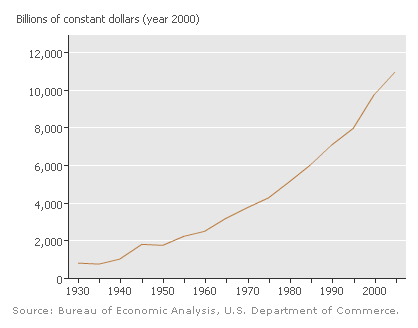Abstract
An economic stabilizer is an economic policy that automatically rises and falls to counter immediate trend without necessarily involving the government. It uses a multiplier to keep the national income at high levels even when the government incurs a deficit during an economic recession. It helps in keeping the economy stable because it keeps the import at low levels during recession hence ensures that the national income is spent domestically and not in foreign markets.
Any practices or institution in a domestic economy that helps in the reduction of fluctuations in the economy by manipulating the money in circulation and available for spending otherwise known as disposable income is an automatic stabilizer (Souleles, 1999).

The existence of an automatic stabilizer lessens the multiplier and hence it aides in decreasing fluctuations in the real national income, when changes in usage of the national income occurs.
An automatic stabilizer helps in resettling induced taxes, transfer payments and imports and exports. In induced taxes it generally sets the taxes at a lower rate in a recession because many taxpayers have low income levels. In transfer payments the government will have to reconsider its payment of transfer payments in booms and recession because various factors change in booms and recessions. Also in imports the government decreases the import of goods in recessions and increases them in booms (Sargent, 1979).
Induced taxes
During recessions the tax revenue decreases proportionately to the national income. This is because as an individual’s income rises, so does the average tax paid to the government. If the income decreases eventually the average tax will decreases. Also the corporate taxes paid to the government will also decrease because with low national income so is the low profits the corporate gain. So in general if the national income is high so is the tax the government will receive.
Transfer payments
It is the government responsibility to pay welfare and unemployment benefits to its citizens. The number of unemployed and those in need of welfare benefits increase during a recession. This ultimately means that the government pays out more in recessions than in economic booms.
Imports
In economic booms, people and the corporations marginal propensity to import increases, likewise in economic recessions the marginal propensity to import decreases. While importing, the level of money in the domestic economy generally goes low. However, recessions and booms are also influenced by world wide currency fluctuations and these change the importing and exporting behavior of the domestic economy in general (Sargent, 1979).
Failure of automatic stabilizers
Many economists argue that though the automatic stabilizers exist, they only function in the short term and cannot be relied upon in long term economic situations. They are not also immune to changes in policies, markets and the peoples’ expectations.
Their main weakness is that they do not consider other micro-foundations in economics and they also ignore rational expectations in an economy. It can not be considered as the ultimate economic analysis and its existence can be overrun by changes in policies, markets and expectations (Souleles, 1999).
Reference
Sargent, Thomas (1979). Macroeconomic Theory New York: Academic Press. 451 – 478.
Souleles, Nicholas. (1999). “The Response of Household Consumption to Income Tax Refunds.” American Economic Review 947 – 95.